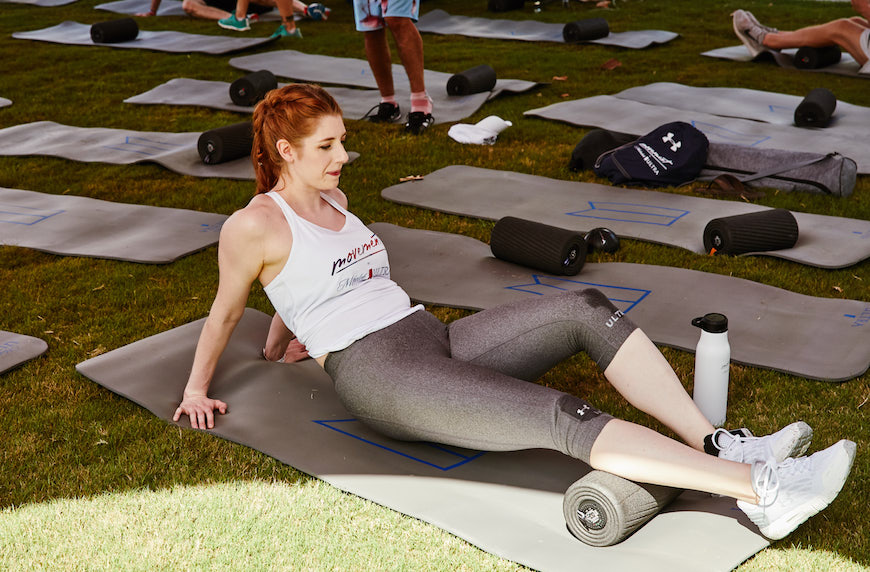Here’s How *Not* Going to the Gym Can Help You Find a Groove With Your Fitness Routine
In the age of “if you didn’t Instagram your workout, did it really count?” fitness can feel like an all-or-nothing proposition—but it shouldn’t. Together with Michelob ULTRA—the next-level light beer that wants to take the stress out of staying fit—we’re exploring ways to be active that you’ll actually enjoy. Because being healthy doesn’t require fitness to be your whole life, just one (fun) part of it.
Sometimes the fitness scene can be a little, well, intense. From the month-long challenges at boutique studios to the #NoDaysOff hashtags on fitfluencers’ Instagram posts, the incessant push toward improvement is enough to make you feel like rest days are out of the question.
Well, if you’re under the impression that getting fit means you have to work out every single day, we’re happy to announce (drumroll please): it abso-freaking-loutely does not.
To show you why, we teamed up with Michelob ULTRA—which is all about finding the healthy balance between fitness and life, AKA making time for both the gym and happy hour—and are putting a big ‘ole red flag on the idea that if you want to see results in the gym, you need to be there seven days a week.
In fact, if you’re struggling to settle into a fitness routine, it actually might be a sign that you're doing too much (anyone else dread the gym more when you're super sore?). So let’s drop the glorification of overtraining and start celebrating the benefits of taking a day (or two, or three) off.
Keep reading for all the intel on how rest days can help you stick with your fitness routine.

The case for rest days
For starters, let’s review how muscles grow, shall we? When you put strain on your body by working out, you’re creating teeny tiny tears in your muscle fibers. Your cells are then called to action to repair the damage and restore your muscles, making them grow bigger and stronger. Ah, science!
Muscles then need time to recover, and some studies, like this one, suggest it takes as many as three days for our bodies to recuperate before they’re able to perform at the same level. Which makes sense, right? You’d never expect to bang out a run immediately after spraining your ankle because injuries (even self-inflicted micro-injuries to your muscles) take time to heal.
Of course that doesn’t mean you have to be bedridden for those three days—you can most certainly find a less intense way to move your body such as walking, swimming, or yoga. But, if you’re feeling the effect of DOMS (delayed onset muscle soreness, which can happen to everyone from pro athletes to casual gym-goers), studies like this one suggest that taking one to two days off of that specific muscle group is crucial for effective recovery.
Not to mention the looming threat of getting injured that comes with working out every single day. As your muscles work in overdrive, they have a limit (you’re not an Avenger, sorry). Expecting them to show up for you seven days in a row is unrealistic and, according to this study, a recipe for depletion and injury.
In other words, if someone tries to tell you to “push through it” when you say you’re too sore to hit the gym for another leg day, this is your permission slip to ignore them. Your body is telling you it needs a break!
So, how much rest is too much?
“The limit does not exist!” Kidding… of course there’s a limit to how much recovery you can get away with before you’re just skipping workouts. The good news is that skeletal muscle, the muscle that attaches to bones and is responsible for movement, doesn’t deplete all that quickly.
This study found that men who took two weeks off resistance training were able to maintain their level of strength. So, if you just returned from a Eurotrip and want to jump back on the bandwagon, good news: your body still knows what’s up.
However, if you’re not injured and have fitness goals you’re chasing, don’t push your luck past two weeks. This 2013 study suggests that after three weeks of “detraining” our bodies start to lose strength and getting started again could be a real struggle (starting the dreaded DOMS cycle all over again).
Best case scenario for time off is to dive back in as soon as you’re able, and find a schedule that fits your lifestyle, includes rest days, and keeps you happy. After all, fitness isn’t about looking good, it’s about feeling good. And who doesn't feel good kicked back on their couch with a cold one every now and then?
Sponsored by Michelob ULTRA
Top photo: Stocksy/H Studios
Loading More Posts...